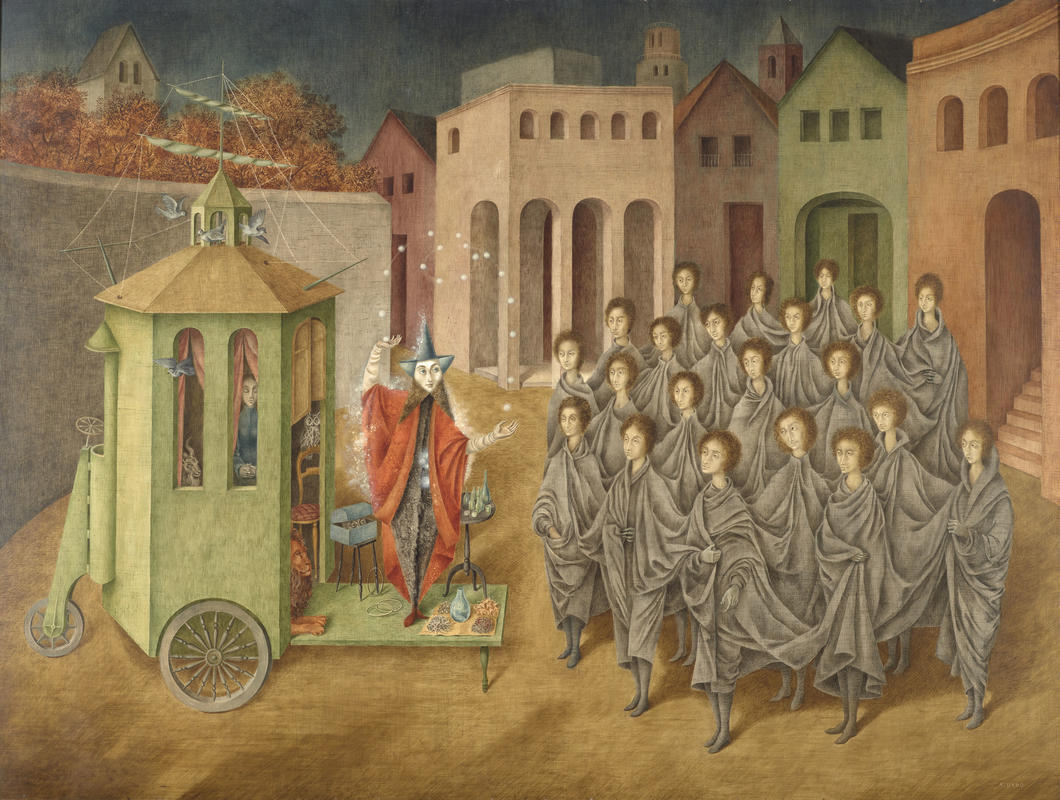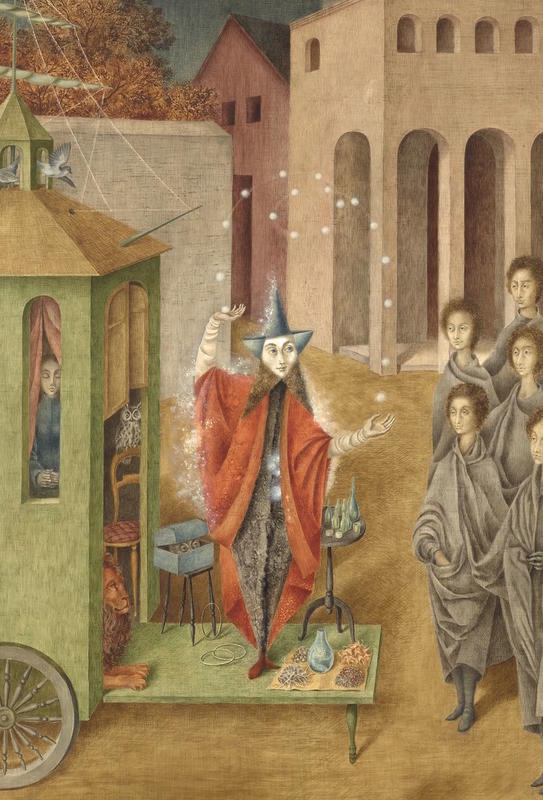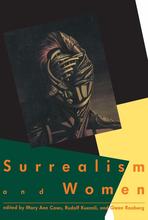More about The Juggler (The Magician)
- All
- Info
- Shop

Contributor
The published writings about Remedios Varo's The Juggler read more like diary entries or therapy sessions than art history.
They are full of imaginative observations about the magical, occult, and esoteric symbolism of the painting. If you're not used to metaphysics, light some vetiver incense, toss an I Ching, and strap on your crystal-studded seatbelt! Like the character of the juggler in the Tarot, this painting transfixes people with its strange composition and its layered mystical references. It won't stay in one place: it sprays its meaning all over the room like a broken faucet. The juggler is attractive to many artists. Leonora Carrington and Victor Brauner also did paintings based on the Tarot's juggler.
According to Meredith Derks, Hieronymus Bosch, also a student of esotericism, had a profound influence on Varo. In particular, his painting The Conjurer is like a companion piece to The Juggler, in that both are representations of the second card in the Tarot deck, after "card number zero," the fool. Like the coyote in American indigenous cultures, the Heyoka in Lakota culture, or Bacchus in Rome, the Magician is the trickster who does unanticipated and sometimes non-rational or extra-rational things, in order to teach you a lesson. Varo's juggler wears a shimmering robe like Bosch's conjurer, and both make reference to the practice of alchemy, which transmutes things into higher synthetic forms. In Tarot, the teacher of both Bosch and Varo, the Fool visits the Magician on his journey to self-realization, and he is a docile spectator, easily distracted and captured by the visual appearances, rather than the actual essences, just like the onlookers in both paintings.
The juggler represents the intermediary between earth and the higher, divine spheres. In the days when astrology was a major religion, this intermediary was Hermes or Mercury. The juggler points upward with his right hand, the side of revelation, and downward with his left, the side of concealment. Varo says, "This painting is about a magician full of tricks, color and life. In this covered wagon he has all sorts of marvelous things and animals"—not the covered wagon of the Oregon Trail variety, but a wagon containing the secrets he uses to hypnotize the crowd."
Before him," Varo continues, "is a uniform mass of beings." The uniform mass has sacrificed its most valuable possession, its personal identity, and has become silly putty, fused psychically with the spectacle of the juggler. Oddly, its receptiveness simultaneously represents the dystopian future of Orwell and the state of spiritual grace sought by mystics. "So that it is even more evident that they are a mass, they wear a collective cloak, an enormous piece of gray fabric with holes for their heads. They all look alike, have the same hair, et cetera." The beings in the uniform mass are androgynous: their gender is ambiguous and they personify both male and female.
The juggler's face, according to Salomon Grimberg, is made from mother-of-pearl, also known as nacre, the same substance as the outer layer of a pearl. It is a beautiful material that protects molluscs and other creatures from parasites and intrusions into their soft, vulnerable insides, just as Varo's message is protected by layers and layers of allusions.
In a great move of mystical art criticism, Dr. Salomon Grinberg claims that The Juggler is a self-portrait of Varo as a man. "Both Varo and the juggler bring together the visible and invisible," revealing something in the physical world that existed already, eternally, in the metaphysical world. "Both mesmerize the masses and are questioned only by the few."
There's no doubt that this one's for the initiates, the nutty, the seers, the people who make a beeline for the metaphysics section of any bookstore.
Sources
- Derks, Meredith. Translating Magic: Remedios Varo's Visual Language. Kansas City, MO: University of Missouri, 2017.
- "Juggler (El Juglar)." Christie's, May 29, 2008, https://www.christies.com/lotfinder/Lot/leonora-carrington-englishmexic….
- Kaplan, Janet. Unexpected Journeys: The Art and Life of Remedios Varo. New York: Abbeville, 1988.
- Ovalle, Richard, Walter Gruen, Alberto Blanco, Teresa Del Conde, Salomon Grimberg, Janet A. Kaplan, and Remedios Varo. Remedios Varo catalogue raisonne. México, D.F.: Walter Gruen/Ediciones Era, S. A. De C. V., 1998.
- Voices of México 25-29. México, D.F.: Universidad Nacional Autonoma de México, 1993.













